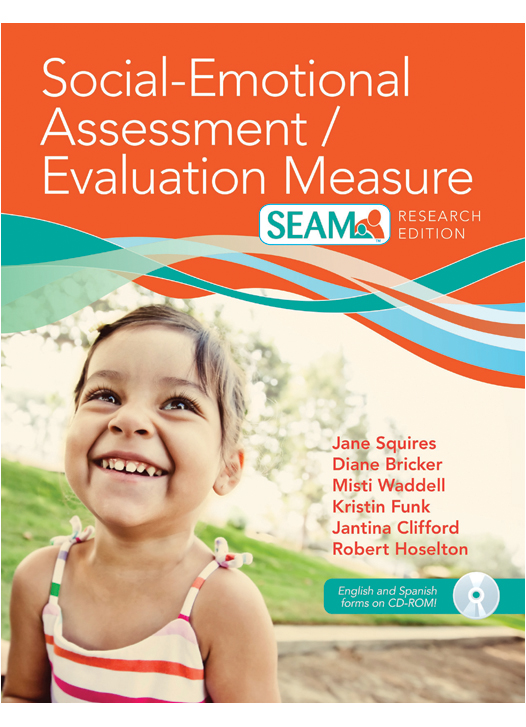Related Products
For Professionals
- Amplification
- Assessment of Student Skills, Challenges, Needs
- Early Childhood: Infants, Toddlers, Preschool
- Hearing Loss – Identification, Impact and Next Steps
- IDEA Law Summary Information
- Language and Speech Development Issues
- Legal Issues in Serving Children with Hearing Loss
- Listening (Auditory Skills) Development
- Planning to Meet Student Needs
- Self-Advocacy Skills for Students with Hearing Loss
- Self-Concept: How the Child with Hearing Loss Sees Himself
- Social Skills
- Speech Perception & Learning
Related Teacher Tools Takeout Items
Addressing Self-Esteem and Issues of Fitting In
Self-esteem is an important contributor to school success and the confidence needed to function well in the mainstream setting. Without a strong, positive self-esteem our students with hearing loss are at risk for rejecting their hearing devices, just so that they can feel as though they ‘fit in.’ Sadly, many students have actively made the choice that they would rather have peers and teachers believe that they are not smart, than admit that they have a hearing loss. Only actively talking about the issues and preparing students with reslience and appropriate advocacy skills from an early age will address this issue.
Some of the information below was derived from the Nov/Dec 2014 Volta Voices issue was devoted to self-concept, identity and self-esteem with hearing loss (look up
digital version).
Psychosocial Development
Erikson described the development of psychosocial skills as a series of developmental challenges, or stages. Because of reduced access to communication, progress through the stages of social development require more support if a child has a hearing loss. Refer to the chart found on page 325 of
Building Skills for Success in the Fast-Paced Classroom for more information
Only the stages for tweens and teens are discussed below. Note specifically:
- In grades 2-5 children want to show that they are competent. If they feel as though they are incapable, they may procrastinate in work because ‘it won’t be good enough anyway.’
- As they become tweens/teens (approximately ages 10-12) they are trying to reconcile “the person I am” with ” the person society/my group expects me to be.” For students who are the only person in their peer group, grade or school who had hearing devices, there is a subtle message that they should be like everyone else in their group. This often results in students who may try to ‘get by’ without their hearing devices.
What you can do:
Ellen Rhodes, in the Nov/Dec 2014 Volta Voices issue described her framework for working on psychosocial issues with tweens and teens:
- Help students to actively reframe situations in a positive light (the glass is half full rather than half empty)

In that same vein, take turns playing fortunately-unfortunately with one person being the optimist and the other being the pessimist in describing situations specifically from a positive and a negative perspective.- Actively discuss how everyone can make mistakes, have failures, and experience embarrassing moments and that we can learn much from these experiences. Focus on generating a vivid positive mental image of how challenges can be handled well in the future.
- Discuss that self-identity (how you see yourself as part of the world) can change based on the situation. Under easy listening conditions they may view themselves as no different from a student with typical hearing. Under challenging listening conditions they may view themselves as hard of hearing, hearing-impaired or Deaf. It is important to help students explore their
feelings about each of the labels and recognize the aspects that make them feel more/less “impaired” and that they can take action to deal with the challenges (self-advocacy).
- Each individual needs to feel as though they belong to one or more groups. Our identities are defined by the groups to which we belong. If a student never interacts meaningfully with other students with hearing loss, it is not surprising that he or she may reject the part of themselves that does not ‘fit in’ with the rest of the group. Whether it is face-to-face or through media, children with hearing loss need to connect!
- Encourage students who are feeling isolated to ‘take the extra step in kindness.’ By offering to help others, using their unique and positive attributes, they can realize that they are valued as group members. Often it is the students with the weakest social communication (pragmatics & theory of mind skills) who are at greatest risk for feeling isolated. These skills should always be a focus of services and skill building (see below).
The Deafness Doesn’t Define You : How to Excel this School Year
START EARLY

An excellent article by Jay Luckner and Anne Molloy in the Nov/Dec 2014 Volta Voices addressed the challenge of overcoming group conversation issues. Some specific suggestions applied to what we can teach children, even starting from preschool:- Throughout early intervention and into early childhood, parents typically adjust their communication dynamics so that they face the child and stand close when communicating. The child with hearing loss may not realize that age-peers and other adults have no understanding of hearing loss and what they might need for successful communication.
- Raise the child’s awareness that most people they meet will not understand that they have a hearing loss. The child, from a young age, needs to be able to simply explain to others that they have a hearing loss and may not always understand what is said.
- The child needs to learn how to explain some strategies for successful communication such as, “Please look at me when you talk. I need to see your face when you talk so I can understand you.”
- A strategy to learn in early elementary is to listen carefully and then summarize what people say. “You want me to get my coat and boots and meet you by the car.” “Oh, you saw the movie Frozen and thought Olaf was funny too.”
- A strategy to learn later in elementary is to practice ways to remind friends and classmates that the student wants to be included in the conversation such as, “Did you just change topics? I really want to follow what you are saying and it’s kind of noisy here. Let me know when you change topics so I can follow along.”
- The major theme to get across is to teach the child that people will be more likely to accommodate their needs if the child focuses on sharing how much they want to be able to understand what the other person is saying.
- If these skills and strategies can be taught before the age of 10, then the child will have a way to deal with challenging conversation situations as a tween and teen.
See Children’s Peer Relationship Scale
I AM GREAT
AG Bell’s Leadership Opportunities for Teens (LOFT) program has been a very successful means of fostering participant’s self-esteem. Ken Levinson, lead counselor of LOFT shared the I AM GREAT model in the Nov/Dec 2014 Volta Voices.
 I –
I –
Independence – it is through experience that we learn who we are and begin the journey to individualizationA – Attitude – people are attracted to others with more positive attitudes.
M – Mistakes are OK. We all make them and can learn from them.
G – Groups – Teens need to find groups that support who they are and the way they live. It is most important for tweens/teens with hearing loss to feel connected to role models and others their own age who have hearing loss.
R – Respect – for ourselves and for others. Rather than responding to a comment about hearing loss or hearing devices negatively, take a more respectful approach to responding.
E – Expectations – There is nothing a child who is deaf or hard of hearing should not try if it interests them. Don’t let other people reduce your respect for yourself or what you can achieve.
A – Adults – who are important role models in the student’s life, including others with hearing loss?
T – Tickle them. Have a good sense of humor and make fun of yourself. Poking fun at yourself is a universal teen thing to do.
Resources for Developing Self-Esteem & Exploring Feelings of Fitting In

WEIRD!
shares the story of a girl who is picked on by a bully in her third-grade class. Luisa begins to feel bad about herself and stops doing things she likes to do. She comes to realize that she is okay just as she is and that the more that the bully thinks she doesn’t care, the more she will be left alone and not picked on anymore. It comes with teaching notes at the end.
WEIRD! is great to pair with conversations about what to say when peers ask about hearing devices or comment on having a hearing loss.

TJ really wrote this story!
I am very fortunate to travel across the US and Canada speaking to professionals who work with children with hearing loss. When I was in Kansas, I got into a discussion with a professional who described TJ and the challenges he went through with inconsistent hearing aid use and feelings of not fitting in. Her solution to helping him deal with these issues was for him to write a book about his experiences. She had it illustrated and the result is this meaningful booklet.
Available at the cost of printing, TJ’s Story is excellent to share with older elementary students, especially as a lead-in to completing the
SAC-A (Self Assessment of Communication – Adolescent) or the Secondary Survey (both of which can be done starting gr 4).
Self-Esteem Resources on the SSCHL Website
- Social Skills & “I hate my hearing aids!”
- Self Concept
Materials from the
https://successforkidswithhearingloss.com/tests webpage
- Children’s Peer Relationship Scale by Dr. Kris English
- SAC-A: Self-Assessment of Communication – Adolescent by Judy Elkayam
- SOAC-A: Significant Other Assessment of Communication: Adolescent by Judy Elkayam
- Checklist of Socio-Pragmatic Language Behaviors for Students with Sensory Impairment
- Various
Social Skills Checklists - Think About It Quiz – informal assessment of self-concept for adolescents
- The Secondary School Survey (Teacher Tools)





